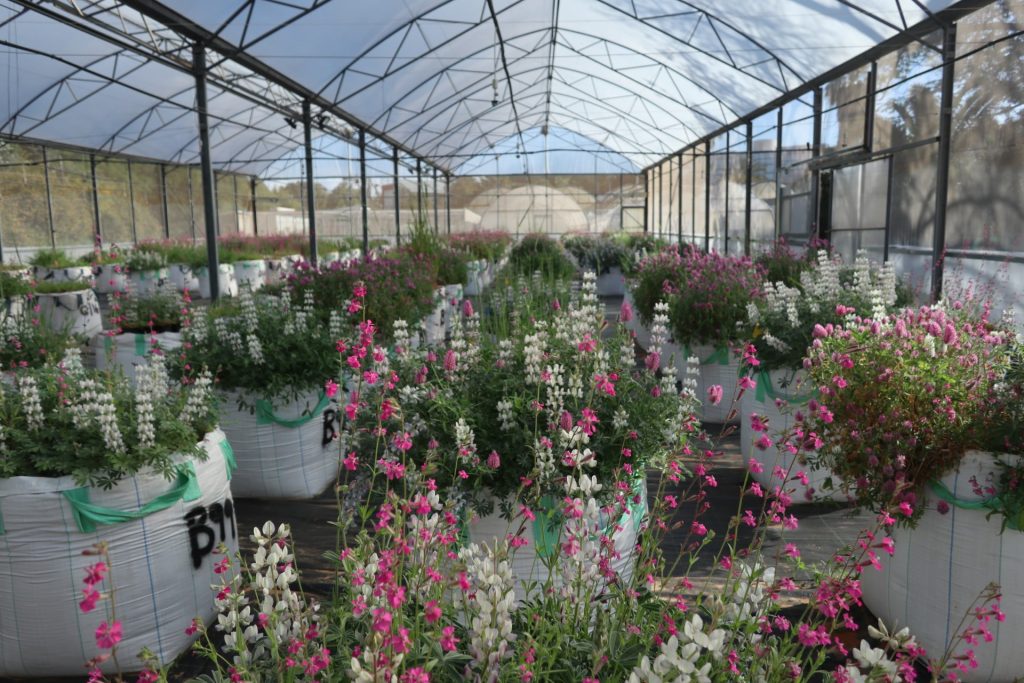
January 24, 2024 — A new study published in the journal Nature examines, for the first time, the lifecycles of plants on a global scale, via the creation of a unique database containing huge quantities of data. The study was led by Dr. Niv DeMalach of the Robert H. Smith Faculty of Agriculture, Food, and Environment at the Hebrew University of Jerusalem (HU); Prof. Itay Mayrose of the George S. Wise Faculty of Life Sciences at Tel Aviv University; and Dr. Tyler Poppenwimer, formerly a post-doctoral student at the Hebrew University and Tel Aviv University and now a researcher at the FDA.
Prior to the current study, the use of empirical data to assess the spread of vegetation was restricted to localized studies of regional systems. The new database brings together data about the lifecycles of some 235,000 species (67% of the species known to science), which were collected over the last 80 years from various sources throughout the world, including millions of observations of species across the globe.
For decades, scientists have been interested in the factors influencing the distribution and lifecycles of perennial and annual plant life, and the competition between the two, to understand the laws of nature and the adaptation of different species to environmental conditions. Various mathematical models have been developed to describe the conditions that affect perennials and annuals. This new study led by Dr. DeMalach and Prof. Mayrose and the international database they created marks the first attempt to examine the relationship between those models and real-world situations.
Plant species can be differentiated into perennials (plants that usually live for longer than a year) and annuals (plants that complete their lifecycle within a single growing season and die after producing seeds). Most species in nature are perennials, as this category includes grasses as well as trees and bushes, and they are very important for the ecosystem as a whole due to their central role in moderating climate changes throughout that system and preventing soil erosion and flooding.
Among agricultural crops the numbers are reversed, with annuals taking up around 70% of agricultural lands and constituting some 80% of the foods consumed by humans. This is because annuals are more efficient at producing seeds, which are a source of carbohydrates and proteins and form the backbone of the human diet.
The researchers found that annuals are common in regions in which summers are marked by particularly high temperatures and low rainfall. This contrasts with the previously accepted view, which did not consider the seasons of the year to be a relevant parameter and instead focused solely on annual averages of temperature and precipitation. For example, the proportion of annuals is higher in California compared with the Chihuahuan desert despite the latter being more arid on average. This is because the summers in California are much drier (almost no summer rain). Additionally, the study found a much lower distribution of annuals throughout the world than was previously thought to be the case. While the accepted estimate in the scientific community was that they form around 12% of all vegetation, the new study findings show a figure less than half that, at no more than 6%.
As part of the study, the researchers created a new and unique global database, which makes it possible to predict the future impact of climate change on the plant world. Among other things, the researchers confirmed the hypothesis that annuals are expected to become more common as the human footprint on the environment becomes larger. In addition, they developed a model suggesting that within three decades, the proportion of annuals will increase in some 70% of regions around the globe. This is likely to harm the environment, as (for example) annuals are less efficient than perennials at reducing carbon dioxide in the atmosphere.
Dr. DeMalach explained the importance of the findings: “The study both helps explain human history and is relevant for the future of humankind. It helps us understand why agriculture, which is the basis for human civilization, first appeared in the Middle East. Our region is unusual in its high proportion of annuals, and now we know why — it has the right climate conditions. Food production is based mainly on annual species. This is true today, and it was true thousands of years ago. These conditions facilitated the transition from a hunter-gatherer society to an agricultural society. Regarding the future, our model suggests that the human species has become the most influential factor on the planet, and not only will its impact have consequences for wild plant life, but the changes caused will also affect human life in turn.”
Regarding the importance of the factors affecting the spread of annuals, Dr. DeMalach noted: “One of the great challenges facing humanity in the 21st century is providing food for billions of people with minimal damage to the environment. Therefore, extensive efforts are being made to shift from annual crops to perennial crops, which are more environmentally friendly.” Dr. DeMalach continued: “The problem today is that perennial crops are still less productive, and there is great debate as to whether they can be made more productive in the future.”
The research paper titled “Revising the global biogeography of annual and perennial plants” is now available in Nature. For further details, visit: https://www.nature.com/articles/s41586-023-06644-x



